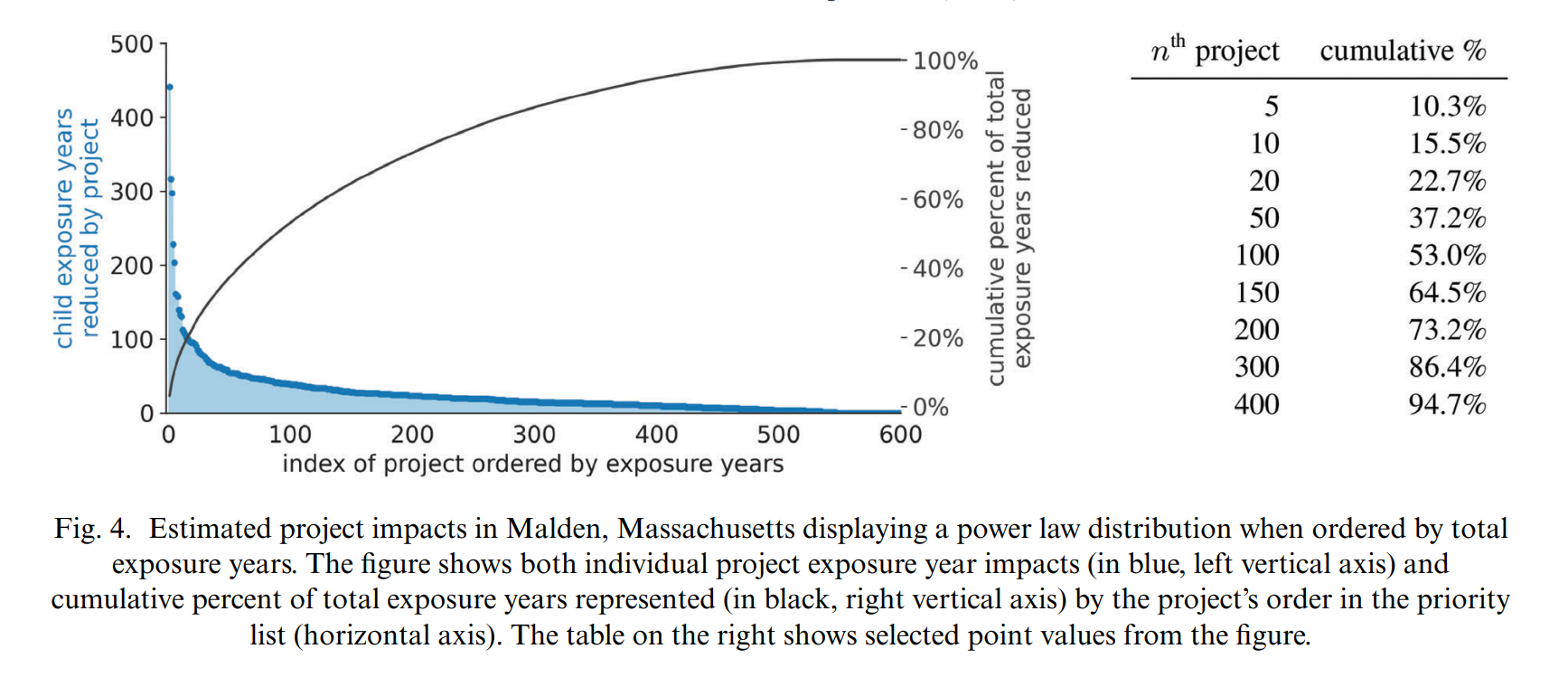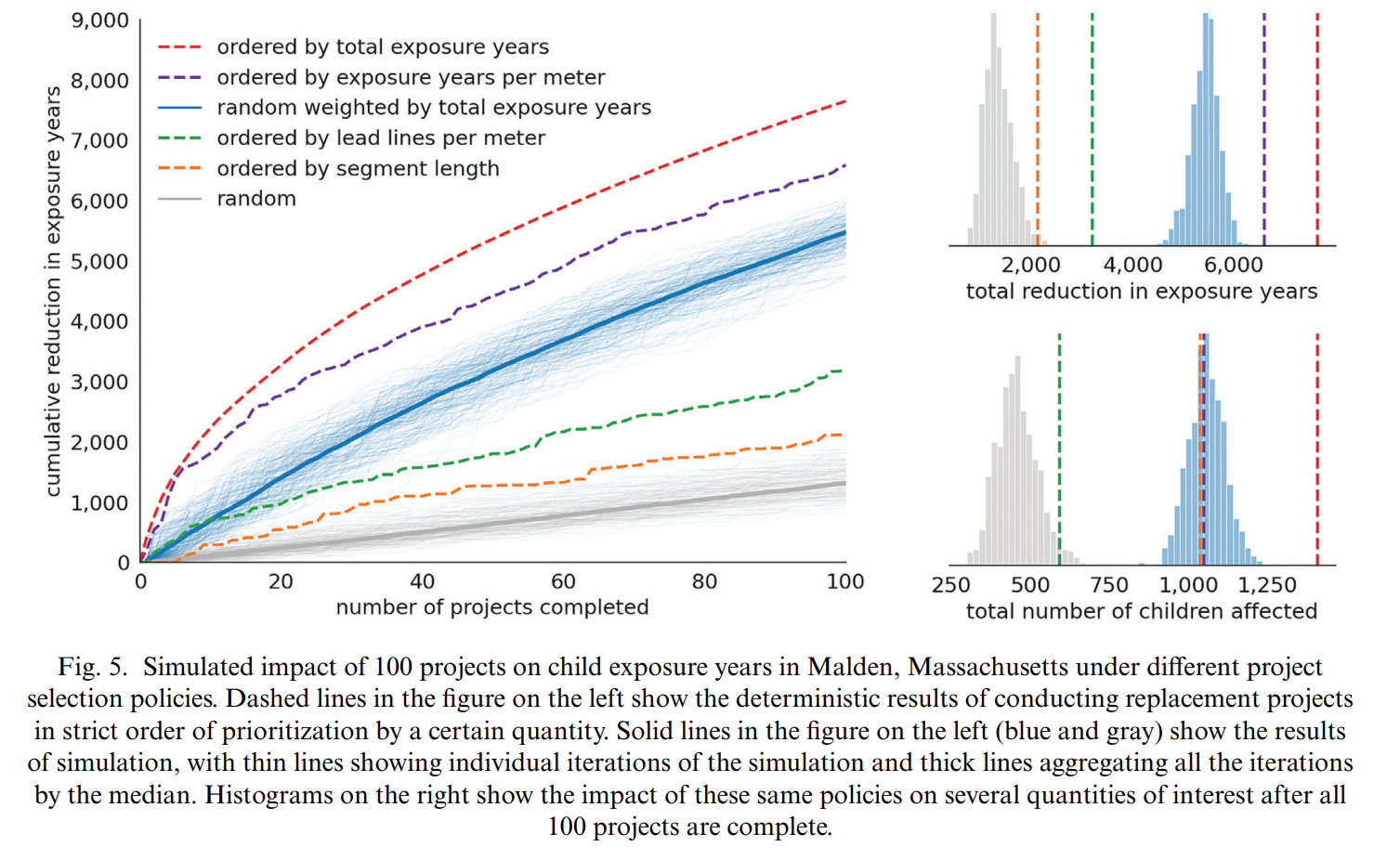My paper, "Prioritizing municipal lead mitigation projects as a relaxed knapsack optimization: a method and case study" (doi: 10.1111/itor.13212), was published this morning over at International Transactions in Operational Research.
(There may be a paywall for non-academic users,1 but the arXiv pre-print is virtually identical and always open access: https://arxiv.org/abs/2201.09372.)
Here's the abstract:
Lead pipe remediation budgets are limited and ought to maximize public health impact. This goal implies a nontrivial optimization problem; lead service lines connect water mains to individual houses, but any realistic replacement strategy must batch replacements at a larger scale. Additionally, planners typically lack a principled method for comparing the relative public health value of potential interventions and often plan projects based on nonhealth factors. This paper describes a simple process for estimating child health impact at a parcel level by cleaning and synthesizing municipal datasets that are commonly available but seldom joined due to data quality issues. Using geocoding as the core record linkage mechanism, parcel-level toxicity data can be combined with school enrollment records to indicate where young children and lead lines coexist. A harm metric of estimated exposure-years is described at the parcel level, which can then be aggregated to the project level and minimized globally by posing project selection as a 0/1 knapsack problem. Simplifying for use by nonexperts, the implied linear programming relaxation is solved with the greedy algorithm; ordering projects by benefit cost ratio produces a priority list that planners can then consider holistically alongside harder to quantify factors. A case study demonstrates the successful application of this framework to a small U.S. city's existing data to prioritize federal infrastructure funding.
And my favorite figures from the paper:


My hope is that our work in the City of Malden targeting lead service line replacements to minimize childhood exposure can be replicated in other cities.
1 The publishers charge a lot to make an article open access. I'd like to do this but it costs over $3,500 for the journal in question.